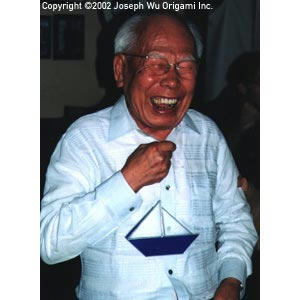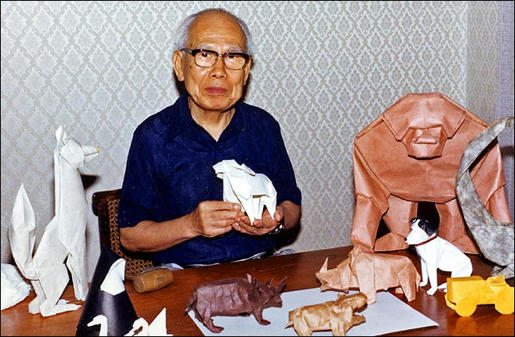Akira Yoshizawa
Thứ Tư, 1 tháng 9, 2010 by: vntopicAkira Yoshizawa (吉澤 章 Yoshizawa Akira; 14 March 1911 – 14 March 2005) was considered to be the grandmaster of origami. He is credited with raising origami from a craft to a living art. According to his own estimation made in 1989, he created more than 50,000 models, of which only a few hundred designs were diagrammed in his 18 books. Yoshizawa acted as an international cultural ambassador for Japan throughout his career. In 1983, Japanese emperor Hirohito named him to the Order of the Rising Sun, one of the most honorary awards that can be given to a Japanese citizen.  Photo by Joseph Wu Born on March 14th 1911, in Kaminokawa, Tochigi Prefecture, Japan, to the family of a dairy farmer. When a child, he took pleasure in teaching himself origami. He moved into a factory job in Tokyo when he was 13 years old. His passion for it was rekindled in his early 20’s, when he was promoted from factory worker to technical draftsman. His new job was to teach junior employees geometry. Yoshizawa used the traditional art of origami to understand and communicate geometrical problems. In 1937 he left factory work to pursue origami full-time. During the next 20 years, he lived in total poverty, earning his living by door-to-door selling of tsukudani (a kind of Japanese soup made of soy sauce and seafood). His origami work was creative enough to be included in the 1944 book Origami Shuko, by Isao Honda (本多 功). However it was his work for a 1951 issue of the magazine Asahi Graph that launched his career (according to another account, his first step on the professional road was a set of 12 zodiac signs commissioned by a magazine in 1954). In 1954 his first published monograph, Atarashi Origami Geijutsu (New Origami Art) was published. In this work he established the Yoshizawa-Randlett system of notation for origami folds which has become the standard for most paperfolders. The publishing of this book helped Yoshizawa out of his poverty. It was followed closely by his founding of the International Origami Centre in Tokyo (1954, when he was 43 years of age). His first overseas exhibition was organised in 1955 by Felix Tikotin, a Dutch architect and art collector of German Jewish origin, in the Stedelijk Museum. Yoshizawa lent many of his own origami models to other exhibitions around the world. He would never sell his origami figures, but rather gave them away as gifts to people, and let other groups and organizations borrow them for exhibiting. In 1956, he married a woman named Kiyo, who acted as his manager and taught origami alongside him. It was around this time that he became famous worldwide. Yoshizawa pioneered many techniques, including wet-folding. In this technique the paper is dampened before folding, letting the folder create a much more rounded and sculpted look. This was considered by many to be the paradigm shift of sorts that allowed origami to become an artform, as opposed to a quaint oddity of folklore. His famous Gorilla, which has a very primitive, deeply creased face, was created by wet folding.  In March 1998, Yoshizawa was invited to exhibit his origami, in what still remains the greatest origami exhibition ever staged, in the Louvre museum. He did it so joyfully, and was not at all opposed to having his photo taken with other competing origami artists, whom he used to detest in his earlier years; many of his patterns were diagrammed by his professional rivals, which angered Yoshizawa when he was younger. However, he found that he was no longer so repulsed by rival origami folders, and that, in fact, he now enjoyed their company. Akira Yoshizawa died on March 14, 2005 in hospital in Ogikubo, of complications of pneumonia, on his 94th birthday.  |
